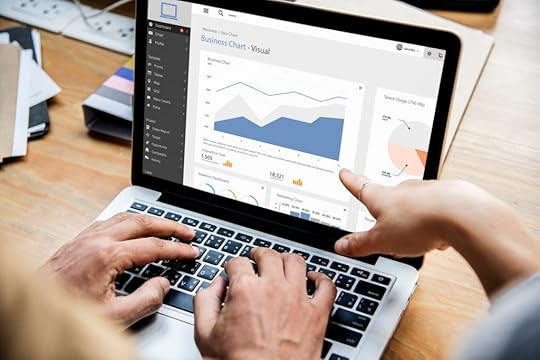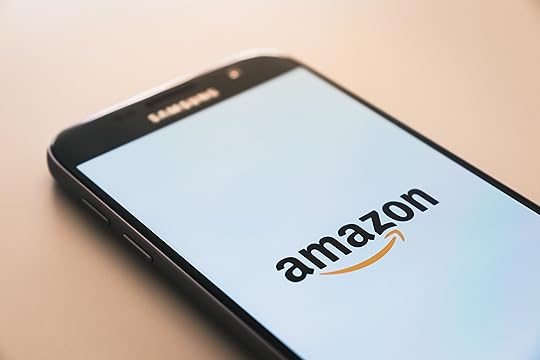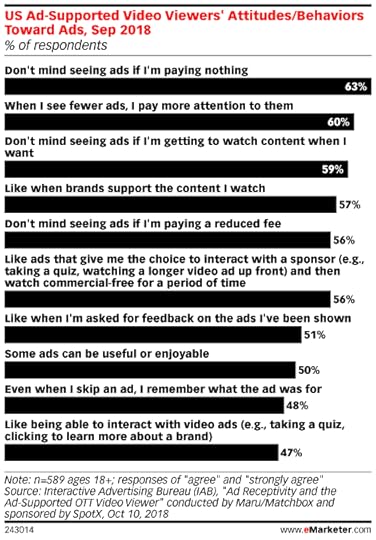Brian Meert's Blog, page 92
February 20, 2019
Keeping Your Facebook CPA Low and Conversions High, According to Experts

February 20, 2019
Anna Hubbel, writer at AdvertiseMint, Facebook advertising agency

As beneficial as Facebook advertising can be, it can also be very costly if approached recklessly. We commonly see this with cost per acquisition (CPA) metrics, also known as cost per action. A CPA is the cost of a customer action that leads to a conversion. Conversions are actions like sales, clicks, sign-ups, and app downloads.
Some advertisers neglect to monitor their CPA, resulting in a large lump of the ad budget spent on acquiring only a small number of conversions. This makes it challenging to break even. In addition to closely monitoring the metrics of your ads, here are three tips from experts on how to lower your Facebook CPA.
Creating a Powerful Ad Design
Neil Patel says ad design, among many other factors, plays a significant role in keeping your Facebook CPA low. He says your Facebook ad design should be powerful and should leverage your landing page.
“When you’re creating an ad design, consider the experience of the user,” Patel says.
In other words, create a design that will give users a positive experience. Avoid designs that are intrusive or annoying. The more positive the experience, the more clicks you’ll get from quality customers, leading to more conversions and ultimately a lower CPA.
A powerful ad design includes an engaging and high-quality visual, relevant content, a value proposition, and a clear call-to-action. Look at effective Facebook ads by successful brands if you need inspiration for your own ad design.
Tracking with Facebook Pixel
Morgan McGregor, a content specialist for social media marketing firm Hyped, tells WordStream that the Facebook Pixel can help you keep your ad costs low. The Facebook Pixel is a snippet of code you can add to your website to track conversions and visitor data.
“You can not only retarget people who have gone on your website, you can even target down to what actions they’ve taken, such as people who added to their cart but never completed their purchases,” McGregor tells WordStream. She adds, “It also allows you to create dynamic sales funnels [for Top Of Funnel, Middle Of Funnel, and Bottom Of Funnel] that can last forever and bring you sales while you sleep – that’s the lifestyle we all dream of.”
As McGregor said, the Facebook Pixel helps you identify which ads are achieving your campaign goals and which aren’t, so you can determine how to adjust your strategy accordingly. The result is a campaign that isn’t wasting money, a campaign that delivers optimal conversions.
Targeting Specific Audiences
A common mistake that results in costly CPAs is targeting a broad audience that many advertisers are also likely targeting. Ben Cook, marketing director of social media agency JC Social Media, tells WordStream the best way to avoid this is to be as precise as possible when specifying your audience.
“By narrowing your target audience, you can drastically reduce the competition from other brands running ads to a similar audience,” Cook tells WordStream. “Remember you are in a bidding war with hundreds of other brands—only bid on who you really want to reach.”
The more specific your target audience, the less likely you will need to compete with other brands, which means you won’t get stuck in a costly bidding war.
With these tips and careful planning, you will only spend money on valuable conversions that help you break even, and your investment in Facebook ads will be worth it.
Written by Anna Hubbel, writer at AdvertiseMint, best Facebook advertising agency
The post Keeping Your Facebook CPA Low and Conversions High, According to Experts appeared first on AdvertiseMint.
Amazon’s Ad Business Will Grow 50 Percent, Says Emarketer
 February 20, 2019
February 20, 2019Anne Felicitas, Editor at AdvertiseMint, Facebook ads agency

When starting an advertising campaign, the advertiser must decide whether to invest in digital advertising or traditional advertising (or both). While traditional advertising has existed for many generations, digital advertising, the younger sibling, was birthed after the advent of the Internet. Since it’s new compared to its counterpart, some advertisers may have reservations about spending on digital.
Not everyone has confidence in digital advertising, yes, but an Emarketer report shows that those individuals are not the majority. According to the report, digital ad spending in the United States will exceed spending on traditional ads. Digital spending will grow by 19 percent this year, reaching a total of $129 billion—that’s 54 percent of the estimated total US ad spending, says Emarketer. The numbers suggest that as more advertisers find value in digital, more ad dollars are invested in online ad platforms.
Competitors, Make Room for Amazon’s Growth
When people think of digital advertising, Google and Facebook likely come to mind first. Although those two are perhaps the most popular, Amazon has a bright future ahead. According to Emarketer, the company’s share and ad business are growing. This year, Amazon’s ad business will surge more than 50 percent. This increase can be credited to the company’s data and advertising offers.
“The platform [Amazon] is rich with shoppers’ behavioral data for targeting and provides access to purchase data in real time…with Amazon’s suite of sponsored ads, marketers have unprecedented access to the ‘shelves’ where consumers are shopping,” said Emarketer forecasting director Monica Peart in the report.
Peart is right: Amazon attracts advertisers with tools that help them generate sales. They can hypertarget ads by keyword, user interests, and product search. Thanks to a recent update, they can also use the new ad metrics to estimate the cost of obtaining new customers. Although these tool do make for an attractive advertising platform, this one takes the cake: loyal users.
Amazon, a Convenient One-Stop Shop

Without a large user base, Amazon’s tools mean nothing. There’s no point in selling ads to an empty platform.
But Amazon has proven its worth not only to the advertisers it’s courting but also to users. It’s so popular among consumers that some are willing to give up sex for a year than quit the ecommerce service. If that’s not enough to prove its popularity, here’s another: an Emarketer consumer survey revealed that nearly half (46 percent) of US internet users begin their searches on Amazon, compared with the 34 percent who went to Google first.
The ecommerce company provides many attractive benefits that it’s not hard to imagine the reason for its popularity. Consumers can purchase a large variety of products straight from the comfort of their couches, effectively avoiding the hassles of traffic, busy checkout lines, and parking; and with a Prime subscription, consumers can receive their purchases at a timely manner for free, as well as access to music, movies, and TV shows. Amazon is more than a retailer: it’s a movie theater, a music streaming service, a library, and a search tool.
Amazon is valuable to consumers, and where they go, advertisers follow. It appears that Amazon has a bright future ahead.
By Anne Felicitas , editor at AdvertiseMint, best Facebook advertising agency
The post Amazon’s Ad Business Will Grow 50 Percent, Says Emarketer appeared first on AdvertiseMint.
February 19, 2019
5 Tips for Protecting Your Facebook Account and Business Page
 February 19, 2019
February 19, 2019Anna Hubbel, writer at AdvertiseMint, Facebook advertising agency

Image Courtesy of Pexels.com
As technology continues to advance, it becomes easier to forget the importance of online security. But ever since the Cambridge Analytica scandal, when the data firm harvested information from over 80 million profiles, Facebook users and businesses alike have been more wary about their security on the platform. In response, Facebook has taken various actions to help you keep all of your accounts secure.
The platform recently published an article with tips on how to keep your accounts and pages secure. Here are the tips Facebook says you should follow.
Have Two-Factor Authentication and a Strong Password
Just as it is important to have a strong password for any online account, the same goes for your Facebook account. To make your password is strong, avoid incorporating things like your name, phone number, or email address. Also, make it distinct from any other online passwords you have. As an extra precaution, do not share your password with anyone.
Facebook also recommends setting up two-factor authentication. If you have a business page, set it up for yourself and make it a requirement for other members of your business. Two-factor authentication ask you to enter a code or confirm your login attempt whenever anyone attempts to log into your account from an unrecognizable device. You can also sign up for alerts that notify you whenever an attempt to log into your account is made from an unrecognized device.
Regularly Review Page Roles and Permissions
When you have a business page, it’s easy to forget who has admin control if multiple members are given access. To avoid a security breach, regularly review who was given page roles and what permissions they have. When adding a page to Business Manager, familiarize yourself with the permissions you allow.
Facebook says you should also give at least one other person you trust admin access to your page. That way, if you should ever lose access to your page, that person has the control to get it back for you.
Stay Away from Suspicious Friend Requests
Spam can make your Facebook page very unappealing to your followers and potential customers. Scammers may try to post spam on your page through fake accounts. To keep scammers from doing this or sending spam messages to you or your contacts, practice caution when accepting friend requests. If you don’t know and trust the person, don’t add them. Additionally, only grant Business Manager permissions to pages you know. If you receive a suspicious request, report it to Facebook.
Avoid Suspicious Links and Malicious Software
Never open a link you don’t recognize or weren’t expecting. Even if you receive a link in a message from someone you know, don’t open it, as your friend may have been hacked. Whether it’s a web URL, a file attachment, or a browser extension, do not open it. If a message appears to come from Facebook, note that Facebook never asks for your password in an email. Report any suspicious messages you receive, and also familiarize yourself with the signs of malicious software.
Additionally, you should regularly update your devices, web browsers, and applications.
Have Trusted Contacts
Enable trustworthy friends to be trusted contacts. If you are ever locked out of your Facebook account, your trusted contacts can send you a recovery code that will let you get back in.
Written by Anna Hubbel, writer at AdvertiseMint, best Facebook advertising agency
The post 5 Tips for Protecting Your Facebook Account and Business Page appeared first on AdvertiseMint.
Twitter Prototypes “News Camera” Feature
 February 19, 2019
February 19, 2019Anne Felicitas, Editor at AdvertiseMint, Facebook ads agency

Jacob Morch / Unsplash
Each social media platform was built with a specific goal. While Facebook was built to connect friends and family, Snapchat was built as a tool to share timely, intimate moments. While Instagram was created to showcase visual creativity, Twitter was developed to keep users informed of trends and current events.
To improve the informative aspect of Twitter, the company is currently prototyping a feature described in the app’s code as the “News Camera,” says Tech Crunch. This Snapchat-style feature was spotted by social media expert Matt Navarra several days ago, and according to Navarra, the camera, accessible by swiping left from the home screen, features location tagging, colored backgrounds, captions, and image overlays.
According to Tech Crunch, Jane Manchun Wong, software engineer and frequent tipster of yet-to-release features, also discovered the camera’s option to broadcast live videos. Twitter confirmed the prototype to Tech Crunch, although the social media company did not disclose the date of the official launch.
For some time now, social media giants have touted the future of mobile. Facebook CEO Mark Zuckerberg has been vocal about his goal to push Facebook as a video platform, developing features such as Facebook Stories and Watch. Other apps were already ahead of the game, such photo- and video-service Instagram and social media app Snapchat.
It may have taken some time, but it seems Twitter is finally catching up with the trend.
By Anne Felicitas , editor at AdvertiseMint, Facebook advertising agency reviews
The post Twitter Prototypes “News Camera” Feature appeared first on AdvertiseMint.
February 15, 2019
Recent Instagram Study Reiterates One Enduring Lesson
 February 15, 2019
February 15, 2019Anne Felicitas, Editor at AdvertiseMint, Facebook ads company
 Ethan Hu / Unsplash
Ethan Hu / Unsplash Instagram, a name that almost everyone will recognize. So many have an Instagram account these days that it’s hard to imagine any young person living Insta-free, especially in a time when one can’t help but document every riveting life event. As of June 2018, the photo- and video-sharing service has more than one billion monthly active users, and if its growth has taught anyone anything, it’s that it will likely grow again in the next year.
Instagram is popular for many reasons, but one of them reminds us of an important lesson.
As shown in this Facebook study, Instagrammers’ love for the app is on the rise for several varying reasons, and among those reasons is their positive association with the app. Sixty-six percent of the participants interviewed for the study said they associated Instagram with the ability to interact with brands and influencers. Yes, the social app does make it easy for regular users and their favorite personalities to connect. One need only tag a brand or respond to that brand’s story to be acknowledged—or even better—to be featured.
Users’ desire to connect with brands and public figures is a reminder that on social, no matter the company’s push for ads and the monetization of features like IGTV, Stories, and the feed, socializing still reigns.

There’s a reason social media platforms are distinguished as discovery platforms: the users don’t go there to buy—they go there to socialize with friends and family. No one visits Instagram thinking I need to buy new socks. I’ll go to Instagram and buy there. They visit Instagram without buying intent, but if an ad for an item so happens to catch their eyes, hey, why not?
As Instagram becomes a popular advertising platform, it’s easy to forget that the users receiving marketing messages aren’t always receptive to sales pitches. Rather than only using Instagram as a means to sell, marketers should also use it as a means to connect with their audience. While running ads and posting promotional content, brands should also publish posts that make uses feel as though the brand were an easily approachable friend.
Stories with polls and Q&A stickers, for example, humanize brands while also giving users the opportunity to engage. Reposting users’ content also makes them feel acknowledged and valued. Who doesn’t like to be occasionally mentioned in an Instagram post by a beloved brand?
On social media, engaging with fans is important. They follow accounts for a reason, and that reason is to connect. Give them the love that they need, and they will give love back.
By Anne Felicitas , editor at AdvertiseMint, best Facebook advertising agency
The post Recent Instagram Study Reiterates One Enduring Lesson appeared first on AdvertiseMint.
How to View All the Instagram Ads You’ve Engaged With
 February 15, 2019
February 15, 2019Anna Hubbel, writer at AdvertiseMint, Facebook ads agency
 Guilherme Stecanella / Unsplash
Guilherme Stecanella / Unsplash Want to keep track of the ads you’ve engaged with on Instagram? While the capability isn’t yet available to all users, there is a way to view your ad engagement activity.
If you’ve noticed a change in your Settings menu, chances are you have this capability. Here’s a step-by-step guide on how to use it to view which ads you’ve engaged with on Instagram.
Step 1: Navigate to your Instagram profile and select “Settings” from the dropdown menu.

Step 2: Select “Ads.”

Step 3: Select “Ad Activity.”

Step 4: View all the ads you’ve engaged with.

There’s also a way to view all the Instagram posts you’ve liked.
Written by Anna Hubbel, writer at AdvertiseMint, Facebook advertising agency reviews
The post How to View All the Instagram Ads You’ve Engaged With appeared first on AdvertiseMint.
February 14, 2019
Advertising: The Next Step for Netflix?
 February 14, 2019
February 14, 2019Anna Hubbel, writer at AdvertiseMint, Facebook ads company
 John-Mark Smith / Unsplash
John-Mark Smith / UnsplashEven though Netflix is considered the gold standard of video streaming services, it may be forced to rethink its business model if it wants to survive.
Presently, Netflix runs off of paid subscriptions to offer streaming without ad interruptions. However, customers weren’t thrilled when the service increased its price by 13 to 18 percent at the beginning of the year. In fact, 27 percent of subscribers said they either are considering or planning to cancel their Netflix subscription as a result, but more than half said they are open to an ad-supported option if it meant a lower cost.
Is advertising in Netflix’s future? The rise in streaming competition suggests that it is.
More companies are launching their own streaming services, giving customers more selections. In 2019, AT&T, Disney, and Viacom are slated to release their own streaming services, along with NBCUniversal in 2020. Not only do these services offer competitive pricing, but they may also take away their content currently available on Netflix.
If Netflix wants to keep its non-original content by these major companies, it will have to pay big bucks, but that’s only if the companies are willing to continue allowing their content on the service at all.
Emarketer says Netflix should consider an ad-supported option so it can keep its customers by offering lower subscription costs. According to a 2018 survey, 73 percent of adults who use video streaming services say they watch ad-supported video. Further, 59 percent said ads don’t bother them if they can watch what they want, and 56 percent said they’re okay with ads if it means a lower overall cost.
 Image Courtesy of Emarketer
Image Courtesy of Emarketer Hulu, as an example, had 40 percent more viewers on its ad-supported service year over year in 2018. Additionally, less than 40 percent of Hulu subscribers pay the extra four dollars for an ad-free experience, which means they don’t mind the ads. Emarketer forecasts Hulu’s ad revenues totaling more than $500 million by 2020.
“Pure subscription services like Netflix will, at some point, have to resort to additional monetization options (i.e., advertising),” Emarketer principal analyst Paul Verna said in the article. “It’s also true that hybrid models will also face upward pricing pressure.”
Written by Anna Hubbel, writer at AdvertiseMint, best Facebook advertising agency
The post Advertising: The Next Step for Netflix? appeared first on AdvertiseMint.
What’s a Good Conversion Rate for Facebook Ads?
 February 14, 2019
February 14, 2019Anna Hubbel, writer at AdvertiseMint, Facebook marketing agency
 Ishant Mishra / Unsplash
Ishant Mishra / Unsplash We hear the term “conversion rate” tossed around a lot when talking about digital advertising. It’s ultimately how you determine the success of your marketing campaigns. The marketing professionals say, “The higher the conversion rate, the better.” But what does that even mean? And do you have a high conversion rate? Before you can calculate the conversion rate of your business, you first need to know what a conversion rate is.
What Is a Conversion Rate?
A conversion rate, put simply, is the percentage of your audience that completes a desired action out of your total audience. For example, if you want your audience to make a purchase on your website after they click your Facebook ad, the percentage of users who make purchases is your conversion rate. If you want users to complete a subscription signup, the percentage of users who sign up upon clicking your ad is your conversion rate.
You want a high conversion rate because it means people are buying what you’re selling. If your conversion rate is too low, however, it means your ads aren’t hitting their mark, and you may need to adjust your strategy. At this point, you’re probably wondering, “What’s considered a good conversion rate?”
What’s a Good Conversion Rate?
There are varying professional opinions about what is considered a “good” conversion rate. According to WordStream, your industry and business model ultimately determines whether your conversion rate is good or bad. If you know your conversion rate, WordStream has a benchmarking tool that lets you compare your rate to your competitors’ in your industry. WordStream says ideally, you want a conversion rate of 11.45 percent or higher. This places you higher than the average conversion rate.
Neil Patel, however, has a different take on what your conversion rate should be. He says in order to determine the best conversion rate for your business, you need a baseline. You do this by knowing what your current rate is. For example, if you currently have a two percent rate, you may not want to make 10 percent your goal by week’s end. Set a realistic goal for where you want your rate to be in the next 30 days, the next six months, and the next year. Whatever your current rate is, a good conversion rate, according to Patel, is anything above that.
But since we all feel more confident when we have specific numbers, Shlomo Trachtenberg gives us the average conversion rate through Big Commerce. He says it ranges between one and two percent. So if you want to set a baseline, aim for a two percent rate to start before shooting for the stars. Most online analytic tools provide your conversion rate, so you don’t need to do any hard math to calculate it.
Congratulations! You now have a better understanding of conversion rates. The next step is to pay close attention to your Facebook metrics and your audience’s behaviors on your website.
Written by Anna Hubbel, writer at AdvertiseMint, Facebook advertising agency reviews
The post What’s a Good Conversion Rate for Facebook Ads? appeared first on AdvertiseMint.
February 13, 2019
Engage Your Customers with Shopify’s Product Reviews App
 February 13, 2019
February 13, 2019Anna Hubbel, writer at AdvertiseMint, Facebook advertising agency
 Jacky Chiu / Unsplash
Jacky Chiu / Unsplash A positive customer review can be a powerful marketing tool. When new customers visit retail websites, one of the first things they look at is the product reviews. Customers tend to trust other customers more than they trust a business or brand. So how can you encourage happy customers to review your products?
Shopify’s Product Reviews app allows you to add a customer review feature to your online store. Customers can easily leave a review, allowing them to engage with you and other customers, which could increase your product sales.
The app includes the following features:
A design that matches the look and feel of your online store.
Easy customization of layouts, text, and color.
Easy bulk actions such as publishing, hiding, filtering, and review management.
The ability to import and export your reviews as a spreadsheet.
SEO-friendly review scores you can add to your Google search results.
You can add reviews and review forms to your product page after you’ve installed the Product Reviews app. The app gives you code snippets to place in the backend of the pages or sections where you want the review feature to appear.
What People Are Saying
It only makes sense that you look at the app’s reviews before you decide to use it. The Product Reviews app has a 4.5 star rating out of 1,101 customer feedback. Out of that total, 848 are five stars and 118 are four stars.
“Good and simple app! Very easy to customize into different languages, unlike other providers,” writes SporttiStore, who gives the app five stars.
“Simple but very powerful,” writes Jewelietta Contemporary Handmade Jewelry, leaving five stars. “Very easy to implement. A must-have app for every e-shop. Customers can easily submit a review!”
You can read all the reviews on the Shopify App Store.
Are you a Shopify expert? Learn how to request collaborator access as a Shopify partner.
Written by Anna Hubbel, writer at AdvertiseMint, best Facebook advertising agency
The post Engage Your Customers with Shopify’s Product Reviews App appeared first on AdvertiseMint.
Facebook Merges Instagram Direct with Page Inbox, Allows Page Access to Groups
 February 13, 2019
February 13, 2019Anne Felicitas, Editor at AdvertiseMint, Facebook marketing agency
 Raw Pixel / Unsplash
Raw Pixel / Unsplash In Facebook’s Q4 2018 earnings report, CEO Mark Zuckerberg discussed the company’s fourth quarter accomplishments and challenges, as well as the goals for 2019. One goal is to create features that connect users to businesses, and, eight days after the call with investors, a Facebook Business announcement shows the company fulfilling its promise.
According to the announcement, Facebook is rolling out two capabilities: the ability for account managers to oversee Instagram messages through their page inboxes and the ability for pages to participate in Groups.
Instagram Direct Merges with Facebook Page Inbox
In the next few weeks, Facebook is rolling out Instagram Direct to page inboxes in Brazil and the United States. With the integration of Direct into page messaging, admins can manage conversations in one place, rather than switching between two different apps. The integration is available to both mobile and desktop devices for the application Pages Manager.
After Facebook obtained Instagram in 2012, the parent company’s app has insidiously amalgamated with Instagram, starting with small capabilities, like the ability to publish Stories and feed posts to both platforms simultaneously. With the departure of co-founders Kevin Systrom and Mike Krieger, further integration with Facebook will likely come without opposition.
While Facebook has been subject to criticism in the past two years over privacy and misinformation issues, Instagram’s reputation remains untarnished, with popularity among younger users growing. As Instagram overshadows Facebook, the latter company has more reason to align itself with the video- and photo-sharing service.
Pages Can Now Participate in Groups
In the upcoming weeks, Facebook is allowing pages to participate in groups. With this change, page users can join Facebook’s interest-focused communities and interact with members, rather than doing so from their personal accounts.
The change also helps businesses increase brand awareness by organically reaching relevant users that have never interacted with them before. Because groups are categorized by specific interests, businesses can join communities with members who are likely to be interested in them. In fact, some business owners who already used the new capability increased their follows and messages since participating in pages. One such business owner is Claire Lee of Venue Queen Ltd.
“Since switching over from my personal profile to my business page in groups I network with, I have seen members from these groups follow me or send me messages,” said Lee in Facebook’s announcement.
Still, group admins can reject access requests from pages they see as competitors who may steal their members.
More Changes to Come
In Facebook’s fourth quarter earnings call, Zuckerberg announced that the company is improving the connection between users and businesses. During the call, he also promised improvements to videos, Stories, and news content. The company has fulfilled one of its promises. Will it fulfill the rest?
By Anne Felicitas , editor at AdvertiseMint, Facebook advertising agency reviews
The post Facebook Merges Instagram Direct with Page Inbox, Allows Page Access to Groups appeared first on AdvertiseMint.



